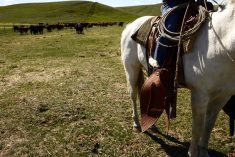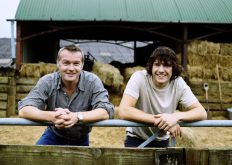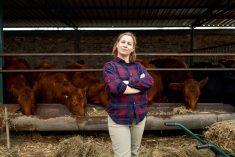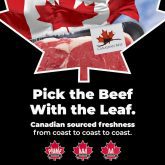We have had some challenging times in the cow-calf business in recent years. We have all been struggling to do the best we can. One common response has been to increase our cow numbers. This has happened because cull cows have been cheap and we think more cows may translate into more profit. One of the results of running a high stocking rate is that our grazing season is shortened and our winter feeding period is increased. Is this likely to result in more profit? As with most things there is no clearcut answer. Fortunately there is a simple way to figure things out and arrive at the best decision.
Read Also

A strategic approach to risk on the ranch
Given the increase in the value of livestock and the market volatility, we need to cover our risks. First,…
There are a lot of variables to determine what stocking rate has the most potential to be profitable. Three of the largest factors are the length of the grazing season, winter feed costs and calf prices. We can use the gross profit test to analyze our business and make wise decisions.
Gross profit is a test we use to compare different enterprises and their profitability. G-P is done on a single unit of production (one cow). You begin by determining the income per cow. The next step is to sort your expenses into variable and overhead expenses. Variable expenses are those that are directly related to the level of production. Variable expenses increase each time you increase the level of production. What expense increases when I add one cow to my herd? Overhead expenses are not directly related to the level of production. The difference between the income and the variable expense is the gross profit. This money is available to cover the overhead costs which will be constant across the scenarios we are comparing.
This example (previous page) is meant to challenge you to think about your operation. For this to have value you need to come up with your own numbers. For income I have used a 500-pound calf selling for $1 per pound with a 90 per cent weaning rate. This results in each cow generating $450. Winter feed is 45 pounds of hay per day (three per cent of 1,500 cow) @ $60 per ton with a feeding period of 245 days. Depreciation is the difference between a bred heifer and a cull cow. I have used $1,000 for the heifer and $600 for the cull. The difference is $400. A culling rate of 10 per cent a year results in a $40 cost. Death loss is one per cent of the value of the cow. Breeding, marketing and vet costs are numbers that should be fairly realistic. This list should include most or all of the variable costs of raising a calf to weaning. None of the overhead costs of the operation have been considered. In this example the bottom line is that each cow loses ($15) per head.
Obviously this is not a good scenario. Let’s see if we can improve it. One place we might look is at our stocking rate. This is entirely in our control and can be adjusted to give us the best possible results. The following table shows three equal but different stocking rates. This is accomplished by changing the length of the grazing season. It is possible to run 100, 80 or 67 cows and consume the same amount of grass by changing our grazing season from 120 to 180 days.
As we change our grazing season and stocking rate we also change our winter feeding period which changes our gross profit. In the original example we grazed for 120 days and fed for 245 days. This resulted in a ($15) gross profit. When we graze for 150 days we reduce feed costs by 30 days x 45 lb. x $.03 for a total savings of $40. This increases the gross profit to a positive $25. When we increase the grazing season to 180 days the gross profit increases to $65. These three gross profits were determined using hay @ $60 per ton and a calf price of $1 per pound with a 500-pound weaning weight and a 90 per cent weaning rate.
The next three charts compare the gross profit from three different but equal stocking rates. They also compare three different calf prices and three different feed costs.
A stocking rate of 100 cows in the scenario produces a positive gross profit in only two of nine examples. The best result is a gross profit of $7,500. The worst result is a loss of ($23,600).
A stocking rate of 80 cows produces a positive gross profit in four of nine examples. The best result is a gross profit of $9,200. The worst result is a loss of
($13,520).
A stocking rate of 67 cows produces a positive gross profit in five of nine examples. The best result is a gross profit of $10,385. The worst result is a loss of ($6,767).
When we compare the stocking rate of 100 cows versus the 67 we see that in the best case the gross profit increases from $7,500 to $10,385. This is an increase of 39 per cent. In the worst case the gross profit decreases from ($23,600) to ($6,767). This is a reduction in losses of 70 per cent. These improvements are a result of changing our stocking rate something completely in our control.
Remember that all these numbers are gross profit. Only the variable costs have been covered. Overhead costs will be the same in all the scenarios and must still be covered. It is clear that the highest gross profit is most likely to cover the overheads and result in a profitable operation.
In this example running fewer cows appears to be more profitable. This is not always the case. Every situation is unique. The important point is to understand how to use the gross profit test. Figure out what’s best for you and stock accordingly. Don’t get stuck in one place. Things are constantly changing. Review your numbers at least once a year and make any necessary adjustments to your stocking rate to maintain your profitability.
I wish you success at stocking to the most profitable rate for your unique operation.
Happy trails.
DonCampbellRanchesWithHisFamilyAtMeadowLake, Sask.HeCanBeReachedAt306-236-6088.
















